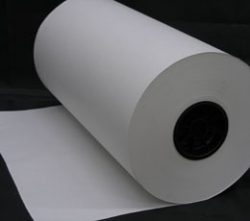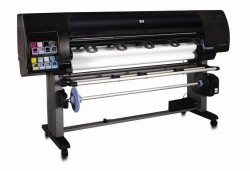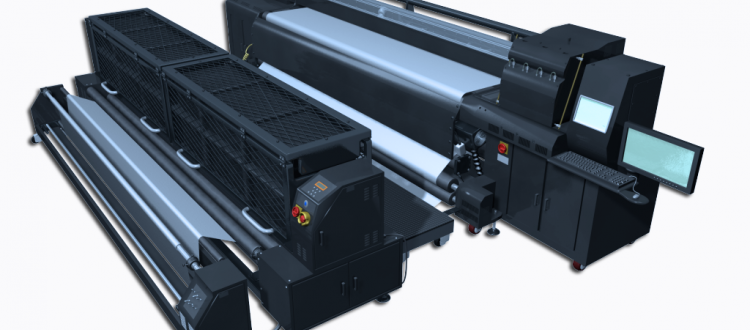In this posting, you will know the advantages and disadvantages of dye sublimation printing on fabric banners and garments, as well its comparison to an inkjet printer when it comes to printing.
Some clients have asked what the advantages or disadvantages are to a dye sublimation printer or printing, so I am addressing this topic today.
Dye Sublimation Printing
Dye sublimation printing is, by definition, the sublimating of dye in fabric. The way it works is like this. First, a transfer paper is printed on a digital printer that is set up with CMYO dye cartridges rather than your typical CMYK inks.
CMYK, or four color process printing (4CP is the shorthand version of CMYK which stands for cyan-magenta-yellow-black) is used in surface printing of materials, including direct-to-fabric printing, but does not become part of the fabric like dye sub printing does.
The CMYO Dyes and Transfer Paper
 Dye sublimation uses dyes, as I said, and a CMYO dye cartridge set that replace the black in CMYK printing with an “Overprint Clear.”
Dye sublimation uses dyes, as I said, and a CMYO dye cartridge set that replace the black in CMYK printing with an “Overprint Clear.”
The inkjet printer that is set up to print dyes (this cannot be done interchangeably without a significant amount of know-how and expense, so once a printer is set up to print dyes, it is usually not converted back to standard CMYK inkjet printing) prints a mirror image of whatever it is that needs printed on a treated dye-accepting paper known generically as “transfer paper.”
Matching the Paper onto the Polyester Fabric
This paper is now “married” to a piece of polyester or another synthetic fabrics (polyester is the most common due to its versatility in look and usage – from stretchable trade show booth fabrics to garments to outdoor flags and a whole lot more) and then it is fed through heated rollers that combine heat – about 375°F or 210°C – with pressure to expand the cells of the fabric and convert the dye to a gaseous state.
How the Dyes Permanently Embed on the Fabric
The dye is sublimated into the open pores of the polymeric synthetic material, and as it cools again, traps the sublimated dye within the cells of the fabric. Because the dye became gaseous, it does not create a dot pattern during the sublimation process like inkjet printing will on fabric or vinyl or other rigid plastic substrates, rather it creates a continuous tone print much like how photographs are developed and look.
Disadvantages of Dye Sublimation Printing
 So, now that I’ve explained the basic difference between dye sublimation printing and inkjet printing, I’ll address the original question of the advantages or disadvantages of both.
So, now that I’ve explained the basic difference between dye sublimation printing and inkjet printing, I’ll address the original question of the advantages or disadvantages of both.
As you may know, I don’t think there’s a lot of disadvantages to dye sublimation printing on fabric, but I’ll give you the two that I can think of off the top of my head.
1. Slower than Inkjet Printing
First, it is slower than inkjet printing because you have two processes in the heat transfer part of dye sublimation, so labor costs are going to be higher to some degree, although there are now printers that have the fabric and paper inline and they are drawn into the heated rollers as the printer continues to print.
2. Production Issue
The second disadvantage is also a production issue that is being solved by the newer printer/roller units just explained in the previous paragraph. In the past, and still in the present, it is not uncommon for the fabric to get a crease or wrinkle in it, or the paper, and suddenly the whole transfer print and piece of fabric are ruined. You would have to start over. Many of those who have been at this for awhile and are using older equipment charge higher prices per square foot for wider material, but many also don’t who have the newer equipment.
Advantages of Dye Sublimation Printing
1. Produces a continuous tone print.
As far as advantages, I talked about the continuous tone printing that creates brighter and smoother color variations and transitions than you’ll find with inkjet printing, and a superior overall look, in our opinion.
2. Printed dyes won’t easily fade.
Also, because the dye impregnates or is sublimated in the fabric, it is permanent and cannot flake off like some types of ink will, particularly garment inks used for t-shirts or inks printed on rigid substrates.
So, durability and appearance are probably the best examples of the superiority of dye sublimation printing of fabric or garments.
Check this out to discover custom dye sublimation printing on polyester fabric banners at a wholesale price.
Popular Posts:




